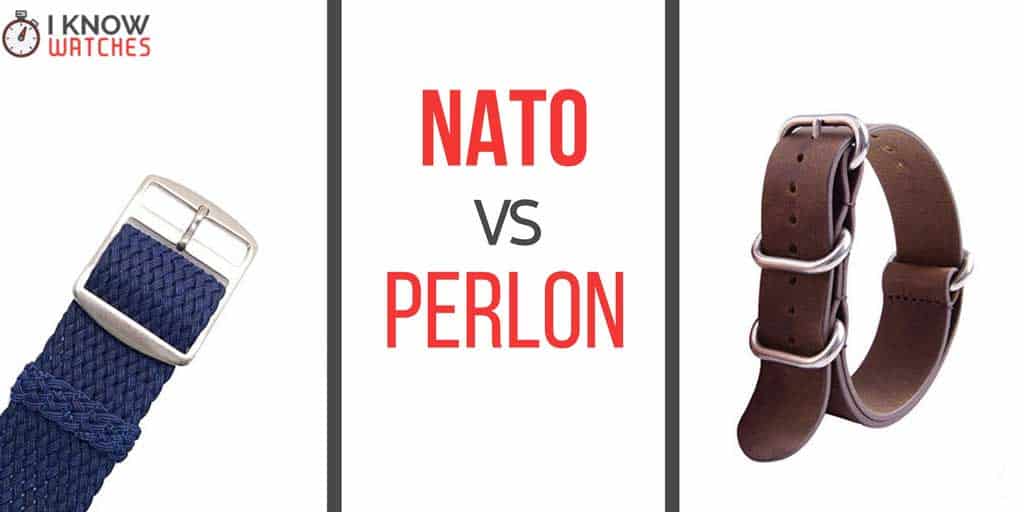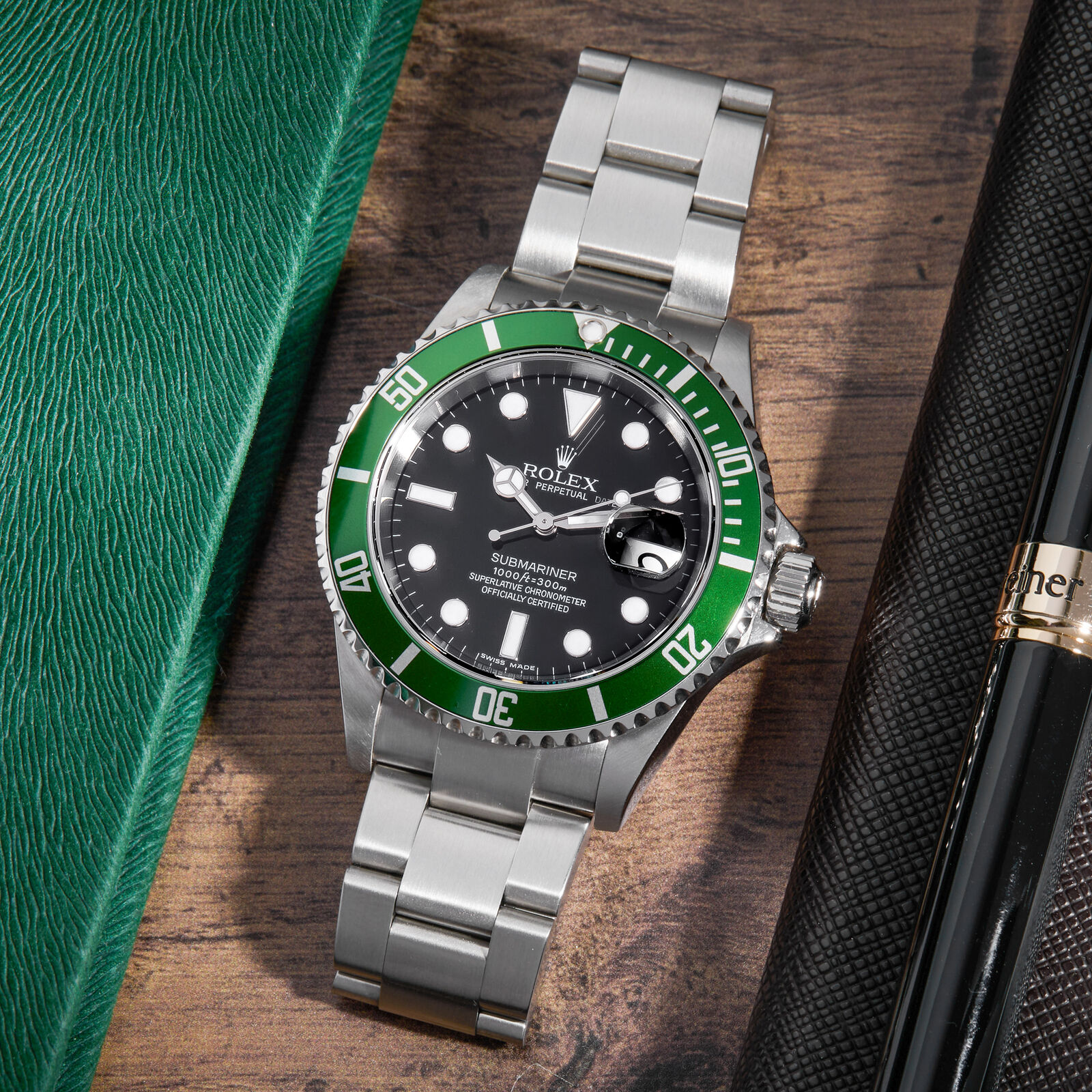Having a few different styles and colors on hand for your favorite watch is always a worthy investment. Sure, your watch probably came with a handcrafted leather band, but it does not always suit your style or mood.
That is where a replacement strap like those in Nato or Perlon style come in handy. There are so many colors and options available, sometimes the choice is overwhelming.
The biggest question most people have though is: What is the difference between a Nato and Perlon style strap?
Nato Straps
Nato straps are the more complicated of the two because of the various rings and strap sections involved in attaching your watch to the strap, and then to your wrist.
Here is an example of a Nato strap in leather which shows you (more or less) the overview of how such a strap is.

Although it looks a little complex, attaching it to a watch is actually quite fast and simple, once you have removed the old band and re-attached the spring pins. That is the starting point for adding these two kinds of straps (Nato and Perlon).
You can see in the video below how you add a Nato strap, and really how fast it can be.
There are a few other things you need to keep in mind when considering Nato (vs a Perlon) such as the overall thickness of the strap once it is attached.
Because the Nato has two sections below the watch, it actually sits a little higher off the wrist.
Then there is the end loop which is quite often tucked back on itself, next to the watch, which adds a unique element to the look of the watch (you can see that at about 1:10 in the video).
You either love that, or hate it I find.
For the rest, the watch attaches like a standard strap by using a buckle that has pre-determined holes. So, in essence, specific steps in size. Why is this important? Because that is where the Perlon strap really differs!
Related: Best Nato Straps
Perlon Straps
Perlon straps are quite a lot simpler than Natos and are made of weaved Nylon 6 (also called Perlon) a synthetic Nylon developed by a German chemist in 1938.
The Perlon strap weaves can vary and lead to a different stiffness in each strap. However, in general it is a very lightweight and flexible strap.
Here are some different examples of the weaves you can get:
No products found. No products found.Perlon straps only metal element is the buckle itself, which is obviously quite different from the large amount of rings on the Nato.
And, the buckle pin can be slotted between any gap in the weave which means this strap style gives you a very fine-tuned fit.
The downside is that the watch itself is not confined to a specific spot on the strap like on the Nato, because the band is just a single element.
You can check out the simplicity of the Perlon strap and how it is used in this video:
Another advantage of a Perlons strap is because they are made of Nylon they are also great for getting wet (or sweaty during exercise). They won’t soak it up like a leather watch and will dry out far more quickly too. So, alot of people choose this kind of strap for outdoor activities or water sports, especially when your watch is water proof down to 30m or more!
Nato Vs Perlon Colors
The last point of difference between these two popular watch straps is the color options you have.
Perlons are always made of a single color, which goes along with their simplicity. They are often quite bright, although you can always go with a simple black, gray or brown.
Natos on the other hand come in a wider variety of options from the leather options, to the simple colors (like the Perlon) as well as many striped color options. So, this may also be a deciding factor in your purchase!
No products found.What is your favorite watch strap? I would love to hear your stories in the comments!





